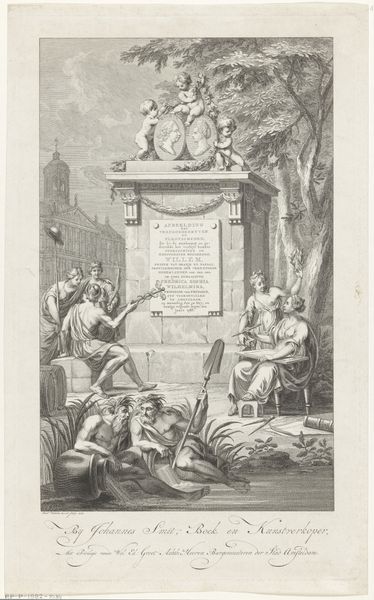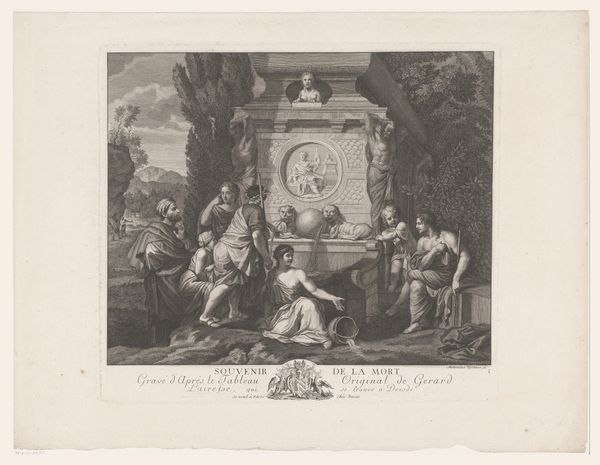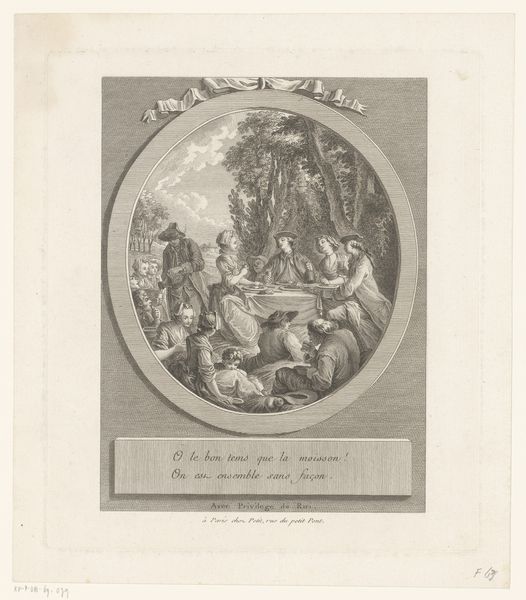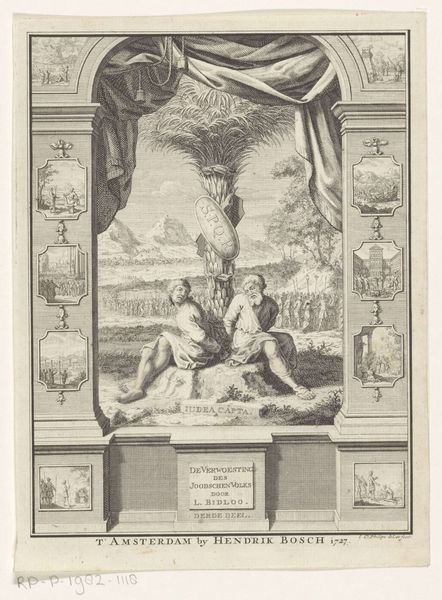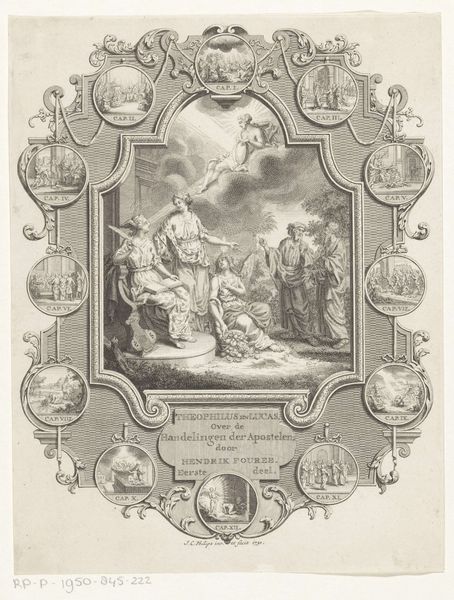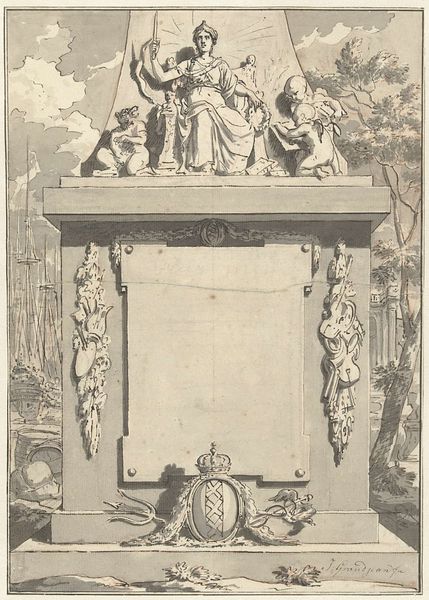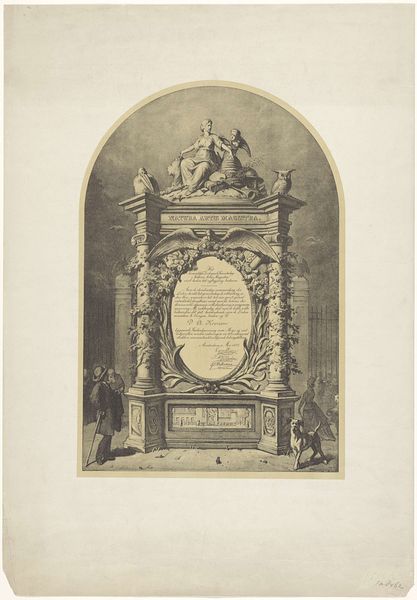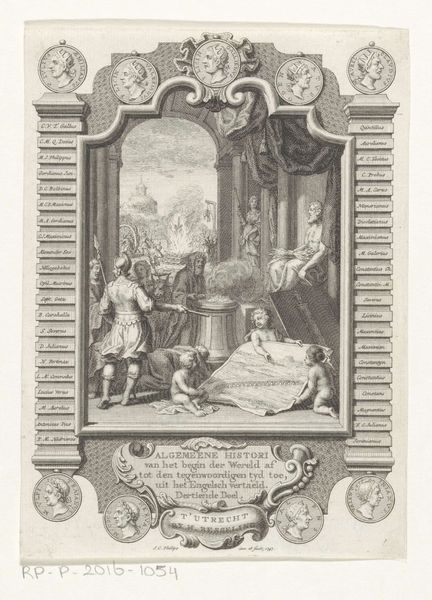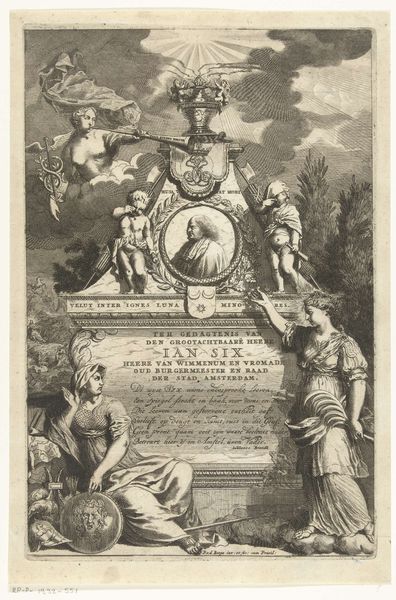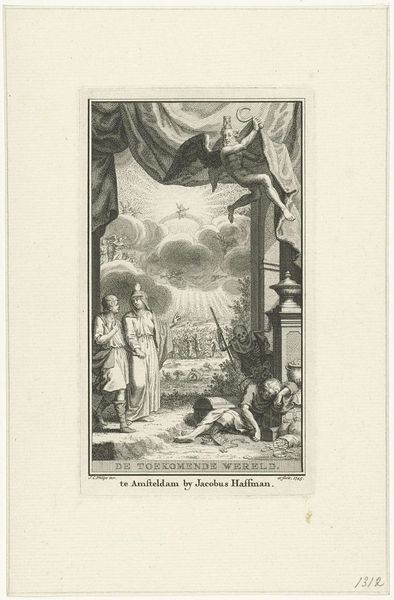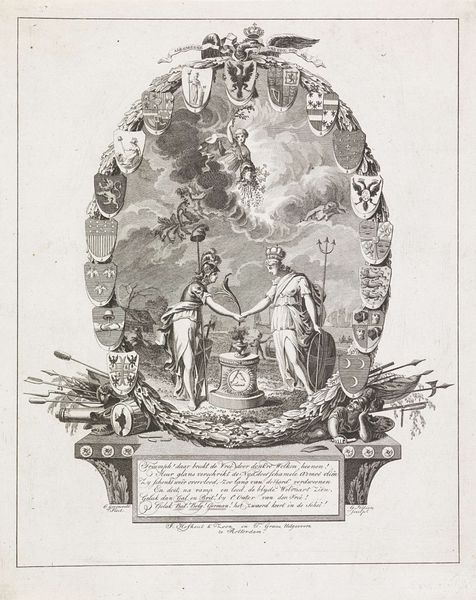
print, engraving
#
neoclacissism
#
allegory
# print
#
landscape
#
figuration
#
romanticism
#
history-painting
#
engraving
Dimensions: height 538 mm, width 357 mm
Copyright: Rijks Museum: Open Domain
Curator: This print, created in 1831, is an allegorical monument dedicated to Jan van Speijk. Editor: What strikes me is how overloaded it feels. The composition strains to contain all this…meaning. It’s an exercise in how far you can push idealized form before it becomes unreadable. Curator: As a product of its time, its density speaks to a specific moment in the Netherlands, grappling with national identity. Created anonymously using engraving techniques, it likely served as a popular memorial print available for widespread consumption, cementing Van Speijk’s heroic image through mass reproduction. Editor: From a formal perspective, note the careful arrangements of figures. We have allegorical personifications, historical scenes in bas-relief, heavenly beings...The print utilizes a balanced asymmetry and a subtle light-dark contrast that underscores the drama while maintaining a sense of neoclassical order. Curator: Exactly! The layering is significant. Each layer reveals an aspect of the narrative constructed around van Speijk’s sacrifice. Think of the labor involved in creating these plates—the engraver becoming part of the story through their very craft, amplifying it for public consumption. Editor: Observe the use of symbolism! The winged figure of fame, the maritime emblems... each meticulously rendered detail contributing to the monumentality of the message. Even the choice of printmaking allows for linear precision and delicate gradations, building the allegory in visually striking terms. Curator: Absolutely. The print’s materiality matters. It connects this "high art" commemoration to a wider sphere of commemorative items circulating at the time, expanding notions of accessibility. And by producing them this way, ideas of heroism became deeply ingrained into social consciousness. Editor: Overall, analyzing the organization of the pictorial elements—their juxtaposition and relationships, the scale, perspective—provides an important framework for assessing the power this historical document exerts. It's fascinating how this artwork captures the visual rhetoric of its period. Curator: It reminds us to question what images of heroism were designed for. Considering both how this image was constructed and distributed enriches our understanding of its significance. Editor: Indeed. Looking closer lets you see both how images take form and what larger effects they aspire to achieve in their intended audiences.
Comments
No comments
Be the first to comment and join the conversation on the ultimate creative platform.

